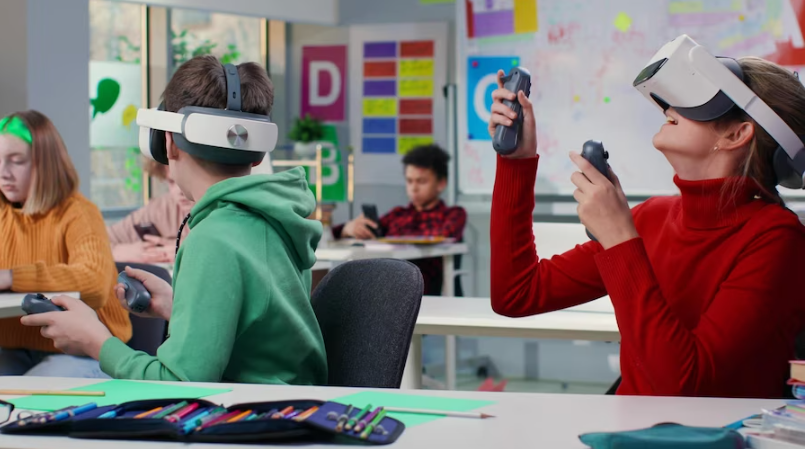Sarah spent hours upon hours in VR, neglecting her studies, friendships, and even physical activities. Concerned about Sarah’s excessive usage, her parents sought the help of a medical professional. The doctor, understanding the potential risks associated with prolonged VR exposure, recommended intervention to address the adverse effects on Sarah’s developing brain.
Sarah’s behavioral and cognitive changes were alarming. She became socially withdrawn, opting for solitary virtual adventures over real-world interactions. Her academic performance suffered, as she struggled to concentrate and retain information. Mood swings and emotional instability became increasingly apparent, suggesting a potential disruption in her brain’s normal functioning. Furthermore, Sarah’s physical activity dwindled as she neglected other interests and hobbies.
Recognizing the urgency of the situation, the doctor, like a psychologist in Multan, emphasized the need to understand VR addiction in children. Sarah spent hours upon hours in VR, neglecting her studies, friendships, and even physical activities.
Concerned about Sarah’s excessive usage, her parents sought the help of a medical professional. The doctor, understanding the potential risks associated with prolonged VR exposure, recommended intervention to address the adverse effects on Sarah’s developing brain.
Sarah’s behavioral and cognitive changes were alarming. She became socially withdrawn, opting for solitary virtual adventures over real-world interactions. Her academic performance suffered, as she struggled to concentrate and retain information. Mood swings and emotional instability became increasingly apparent, suggesting a potential disruption in her brain’s normal functioning. Furthermore, Sarah’s physical activity dwindled as she neglected other interests and hobbies.
To ensure Sarah’s safety and optimize the benefits of VR, the doctor suggested several steps for her parents to take. First and foremost, setting age-appropriate guidelines and restrictions was crucial. Children, especially those in the midst of brain development, should have limited exposure to VR to minimize potential risks.
The doctor stressed the importance of monitoring and controlling the duration of VR sessions. Regular breaks from VR experiences were vital to allow the brain to rest and recalibrate. It was recommended that Sarah use VR for no more than one to two hours per day, providing ample time for her to engage in other activities and interact with the real world.
Active parental involvement was another key aspect emphasized by the doctor. Engaging in VR experiences alongside Sarah allowed parents to better understand the content and its potential impact. It also provided an opportunity for shared experiences and discussions, fostering open communication and reinforcing responsible usage.
Recognizing the urgency of the situation, the doctor, like doctors of best hospitals in Pakistan, emphasized the need to understand VR addiction in children.
Virtual reality and its potential benefits
– Brief overview of virtual reality and its incre- Improvement in spatial abilities
– Rehabilitation and therapy applications
– Reduction of anxiety and stress
Negative Effects of Virtual Reality
– Potential negative effects of virtual reality experiences on the brain:
– Motion sickness and cybersickness
– Eye strain and visual discomfort
– Disconnection from reality and impact on social interaction
– Potential for addiction and excessive use
Assessing the Safety of Virtual Reality for Children
– Age considerations for VR usage in children:
– Vulnerability of developing brains
– Impact on physical and cognitive development
– Potential risks of excessive exposure
Ensuring Safety and Optimizing Benefits for Children
– Establishing guidelines for VR usage in children:
– Setting age limits and restrictions
– Limiting exposure time and providing breaks
– Monitoring content appropriateness
– Encouraging supervision and parental involvement
– Addressing potential safety concerns
Educating Children and Parents about Virtual Reality Safety
– Importance of educating children about responsible VR usage
– Parental guidance and involvement in VR experiences
– Promoting digital citizenship and ethical usage
Future Directions and Conclusion
– Advancements in VR technology and potential implications
– The need for further research on the long-term effects of VR on children
– Emphasizing the importance of responsible usage and safety measures
Conclusion
The VXR effect on the human brain is a complex phenomenon with both positive and negative aspects. Virtual reality experiences have shown potential benefits in various domains, including Sarah’s Story:
Intervention and Rehabilitation for VR Addiction
– Recognizing the signs of VR addiction in children
– Developing effective intervention strategies and treatment plans
– Collaborating with mental health professionals and support networks

